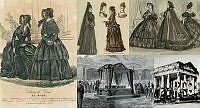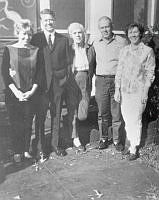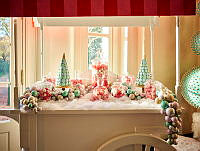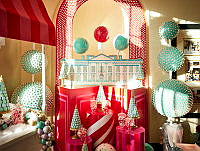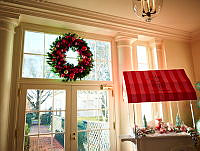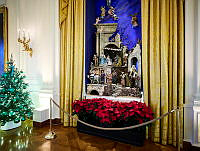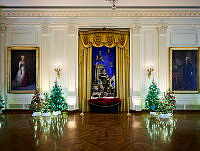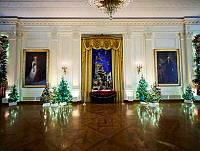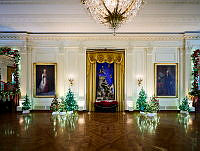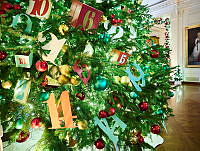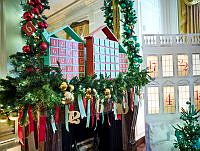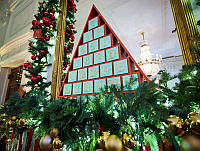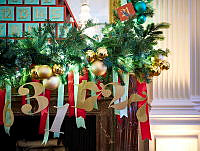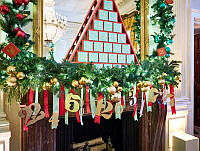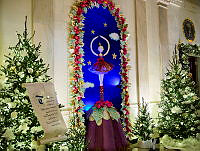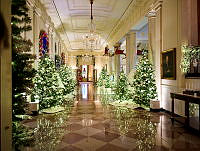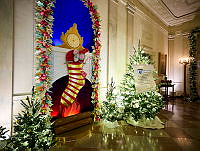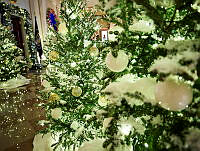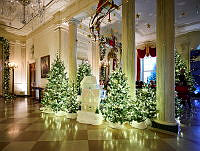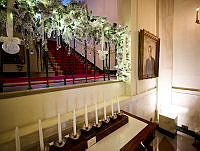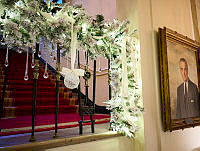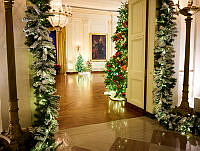An Essay on "The Great Cheese" by Peter Waddell
Jacksonian Democracy Enjoys a Special Treat, 1837
Copyright © White House Historical Association. All rights reserved under international copyright conventions. No part of this article may be reproduced or utilized in any form or by any means, electronic or mechanical, including photocopying, recording, or by any information storage and retrieval system, without permission in writing from the publisher. Requests for reprint permissions should be addressed to books@whha.org

Peter Waddell, The Great Cheese, oil on canvas, 48 x 96.
Peter Waddell for the White House Historical AssociationThe East Room, the largest interior in the White House, was conceived in planning the house as an official gathering place where, among other ceremonies of state, Congress would convene to present bills to the president. President Thomas Jefferson disposed of state ceremony early-on, so there was no urgency to complete the room. It was unfinished when the British burned the house in August 1814 and although reconstructed by 1817, it remained without interior decoration until Congress appropriated the necessary funds to furnish it for the incoming president, Andrew Jackson.
Completed in 1829, during the first year of Jackson's administration, the East Room is shown here in about 1836, having served as old Hickory's stage for his two terms. It was a rich ensemble of glass, mahogany, and silk; the walls were papered in lemon yellow, and twenty-two spittoons served the national habit of the time. Reception crowds, alerted by the Marine Band's marching strains, rushed to see Andrew Jackson enter through the tall arch to the left, and pause for a thrilling moment. Wrapped in his blue cape, the greatest American hero since George Washington posed beneath the halo of gold stars and sun rays that his aides had pasted on the wallpaper above him.
The White House was first opened to the public in 1801 by Jefferson, and by Jackson's time the East Room was the main interior shown to visitors. The East Room's attractions increased notably late in Jackson's administration when the president received fourteen-hundred-pound cheese from New York admirers. Put first in the Entrance Hall for two years, the cheese gradually lost its better fragrance, so, stinking mightily, the by now famous Mammoth Cheese was towed to the East Room where the visiting public was invited to cut off and eat as much as it pleased.
The artist captures the moment, re-creating in the opulent interior the human tone of a railroad waiting room. Foreigners looked upon such White House scenes patronizingly as negative expressions of American democracy. In spite of it, artist Waddell's visitors, dressed nicely a requirement for admission enjoy their free presidential cheese and pause to drink in the delight as we might do today of simply being there.











